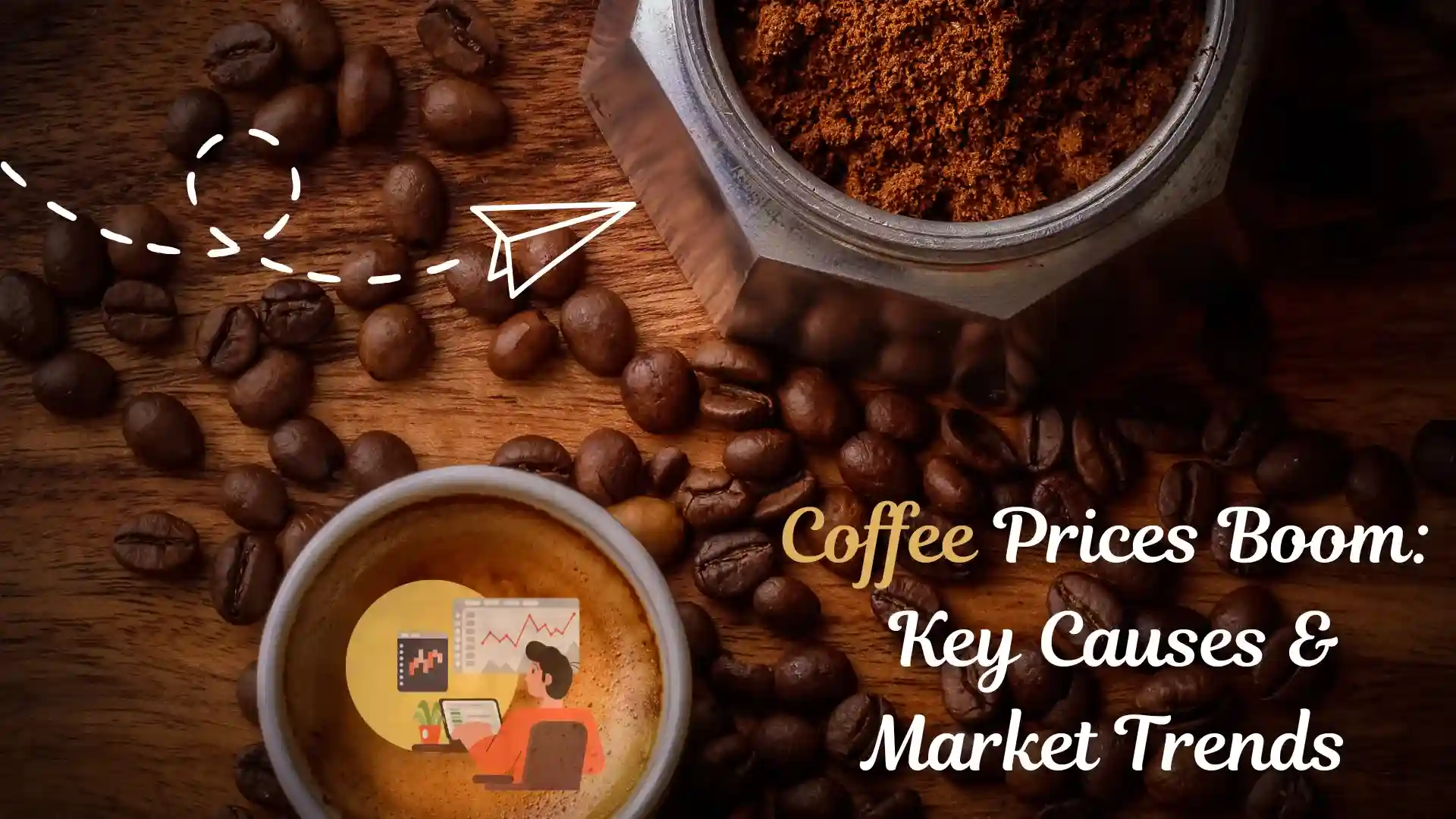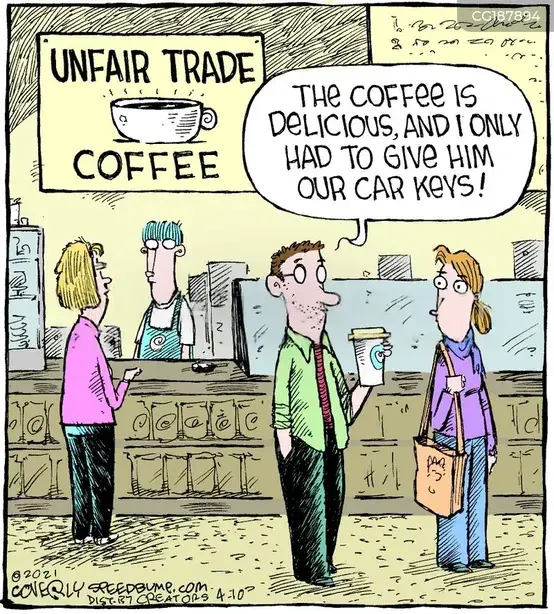
Global coffee prices have soared to historic levels, with Arabica coffee beans reaching an astonishing $3.84 per pound. This surge is driven by multiple factors, including supply shortages, extreme weather conditions, and rising production costs. As a result, consumers and businesses worldwide are feeling the impact of these price hikes.
Understanding the Coffee Price Increase
In recent months, coffee prices have experienced a dramatic rise, marking one of the most significant shifts in the global coffee market. This increase has disrupted supply chains and led to higher costs for both producers and consumers.
One of the biggest factors contributing to this surge is the severe weather conditions in Brazil, the world’s largest coffee producer. Unpredictable frosts and prolonged droughts have drastically reduced crop yields, making it difficult for farmers to meet global demand. With less coffee available for export, prices have naturally risen.

At the same time, the demand for coffee remains strong. Major coffee chains and consumers continue to purchase high-quality Arabica beans, creating an imbalance between supply and demand. This shortage has pushed prices higher, making coffee trading more volatile than ever.
Key Factors Behind the Coffee Price Surge
Several critical elements are fueling this increase in coffee prices:
1. Supply Shortages in Brazil 🇧🇷

Brazil plays a crucial role in the global coffee industry, supplying a significant portion of the world’s coffee. However, the country has faced extreme weather conditions, including severe droughts and unexpected frosts, which have significantly damaged coffee crops. As a result, production levels have dropped, leading to limited supply and rising prices.
2. Weather Challenges in Other Producing Countries 🇻🇳
While Brazil’s crisis is the most significant, other major coffee-producing nations like Vietnam have also struggled with adverse weather conditions. Vietnam, known for producing Robusta coffee, has faced reduced output due to unfavorable farming conditions. This has further added to the global coffee shortage.

3. Rising Production and Transportation Costs 🚛

Coffee production is becoming more expensive due to increasing transportation, labor, and fertilizer costs. With fuel prices surging and supply chain disruptions persisting, coffee producers are facing higher expenses, which are being passed on to consumers in the form of price hikes.
4. Geopolitical Tensions Affecting Supply Chains 🌍
Political uncertainties in coffee-producing regions, particularly Colombia, have created additional challenges. Disruptions in exports due to political instability have contributed to supply shortages, making coffee even more expensive on the global market.

5. Speculative Trading and Market Volatility 📈

The surge in coffee prices has also attracted increased interest from commodity traders. Many traders are adjusting their positions based on these price fluctuations, adding to market volatility. This speculative activity has further amplified price movements.
Impact on Global Coffee Markets ☕🌱🌍
The rising cost of coffee is being felt worldwide, particularly in major consumer markets like the United States, United Kingdom, and Europe. Here are some of the key impacts:
1. Challenges for Instant Coffee Manufacturers
The instant coffee segment has been hit particularly hard. Manufacturers that rely on bulk coffee purchases are struggling to keep prices affordable while dealing with rising costs of raw materials.
2. Coffee Chains Adjusting Prices
Major coffee brands, including Pret A Manger and other global chains, have increased their prices to maintain profit margins. This means customers are now paying significantly more for their favorite beverages.
3. Increased Trading Activity in Commodity Markets
With coffee prices experiencing extreme fluctuations, more traders and investors are entering the market. This has created new opportunities for those who understand commodity trading, but also poses risks due to the increased volatility.
4. Higher Prices for Consumers

Consumers are now paying more for their daily coffee. In the UK, for instance, the average cost of a cup of coffee in a restaurant has reached £3.24, reflecting the global trend of rising coffee prices.
Future Market Projections
Analysts predict that coffee prices may stabilize in the coming months as new harvests enter the market. However, several factors will influence whether prices drop or remain high:
- Weather conditions in key producing countries will determine future supply levels.
- Supply chain adjustments could help balance the market, potentially leading to a 20-30% price decrease after February 2025.
- Long-term climate change concerns may continue to affect coffee production, leading to sustained price fluctuations in the years ahead.
Trading Insights: Opportunities and Risks
For traders, the recent coffee price rally presents both opportunities and risks:

- Volatility creates potential for profitable trades – both long and short positions can be considered based on market conditions.
- Risk management is crucial – traders should carefully analyze price trends and adjust their strategies accordingly.
- Choosing the right trading platform is essential – access to advanced tools and technical analysis features can help traders make informed decisions.
- Technical analysis combined with fundamental market insights can provide a well-rounded approach to trading in this dynamic market.
Technical Analysis of Arabica Coffee Prices

Arabica coffee prices have experienced a strong upward trend in recent months. After a brief period of sideways movement in December 2024, prices found strong buying support, preventing a major decline.
Since then, the rally has continued, and prices show no sign of slowing down. However, analysts predict that the market may enter a short-term consolidation phase before the next major move occurs.
Final Thoughts
The coffee market is undergoing significant changes, with supply shortages, rising costs, and market volatility driving prices to record highs. While some relief may come in the months ahead, long-term factors like climate change and geopolitical instability will continue to shape the industry’s future.
For consumers, this means paying more for their favorite coffee, while for traders, the market presents both opportunities and challenges. Staying informed on price trends and market conditions will be essential for navigating this evolving landscape.
“Curious about other market trends? 📈 Discover how Bitcoin is outperforming gold and even Picasso’s art in value! Read more 👉 Bitcoin’s Value Boom: Beating Gold and Art Investments“
“So, while you sip your coffee and watch the markets move, let AlgoDeltaFX handle the trades for you. ☕🚀 Automate, optimize, and stay ahead effortlessly!
Start trading smarter with AlgoDeltaFX!“
Disclaimer: This article is for informational purposes only and not financial advice. Always do your own research before investing.
source : ig.com

